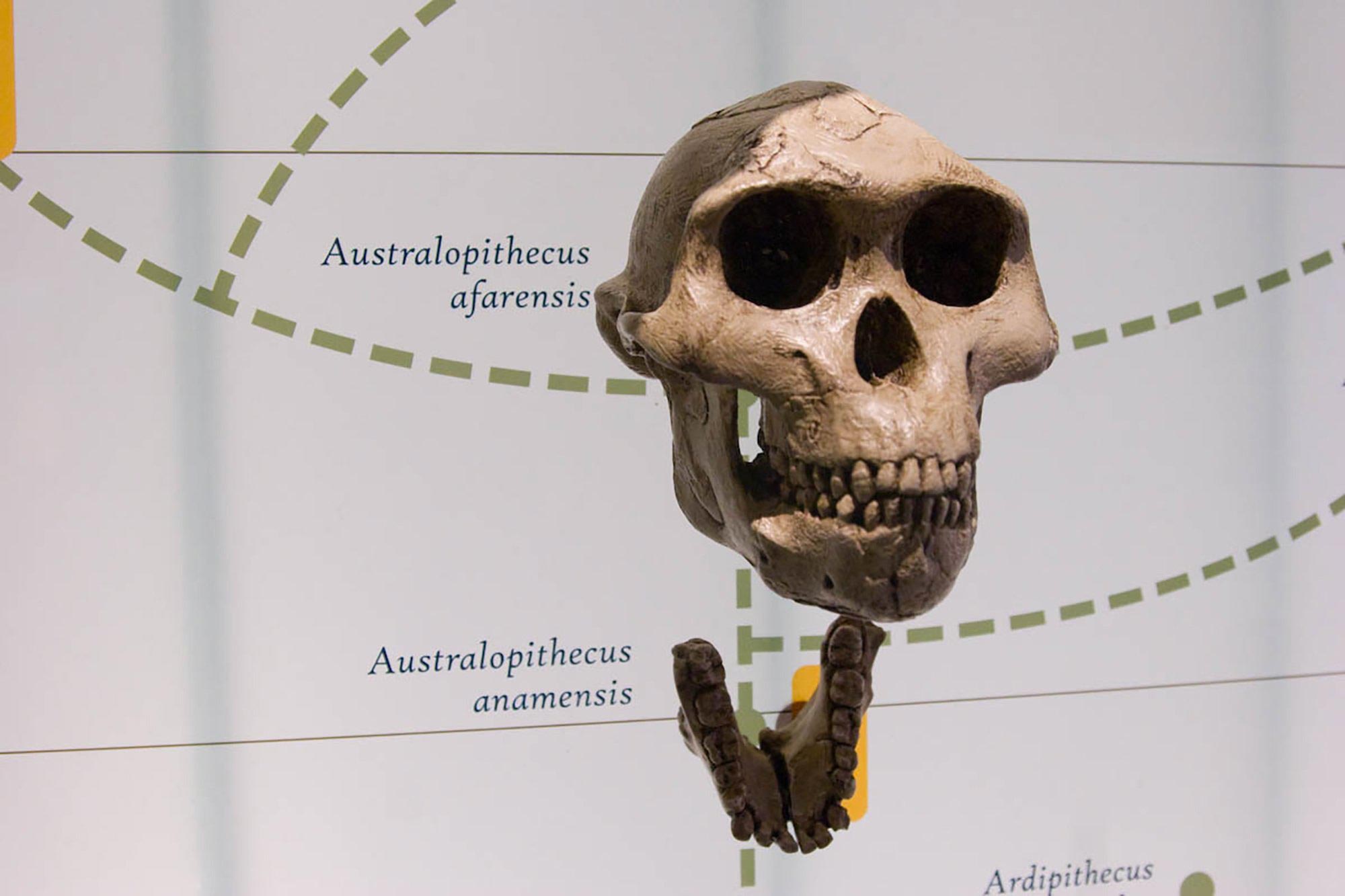Fossils reveal extreme sexual dimorphism in early hominins. The findings reshape views of their social behavior.
A recent study has revealed that males of some of humanity’s earliest ancestors were much larger than their female counterparts. This marked difference in body size, found in both Australopithecus afarensis (the East African species that includes the well-known fossil “Lucy”) and A. africanus (a closely related species from southern Africa), indicates that these early hominins may have lived in societies where strong competition among males contributed to the pronounced size gap between the sexes.
The research, led by Adam D. Gordon, an anthropologist at the University at Albany, was published in the July issue of the American Journal of Biological Anthropology. By applying a new method that addresses the challenges posed by incomplete fossil evidence, the study demonstrates that both A. afarensis and A. africanus showed greater sexual dimorphism than modern humans — and in some cases, even exceeded the differences seen in gorillas.
“These weren’t modest differences,” said Gordon, an associate professor in the College of Arts and Sciences. “In the case of A. afarensis, males were dramatically larger than females — possibly more so than in any living great ape. And although both of these extinct hominin species exhibited greater sex-specific size differences than modern humans do, they were also more different from each other in this respect than living ape species are, suggesting a greater diversity of evolutionary pressures acting on these closely-related species than we had previously appreciated.”
Interpreting fossils with new methods
The findings provide fresh insight into how the fossil record is interpreted. Previous research had produced conflicting views on dimorphism in A. afarensis, with some studies arguing it was comparable to the relatively modest differences seen in modern humans. Until now, however, scientists had not been able to directly compare fossil species, since earlier analyses were restricted by fragmentary skeletal remains and lacked the statistical strength needed to identify meaningful distinctions.

“This analysis overcomes these issues by using an iterative resampling method that mimics the missing data structure in both fossil species when sampling from skeletal material of living species, allowing the inclusion of multiple fossil individuals even when those individual specimens are fragmentary,” said Gordon. “This study provides strong evidence that sex-specific evolutionary pressures — likely involving both male competition for mates and resource stress acting more intensely on female size due to the metabolic constraints of pregnancy and lactation — played a larger role in early hominin evolution than previously believed.”
Why Sexual Size Dimorphism Matters
Sexual size dimorphism (SSD) is more than a simple physical difference between males and females — it also reflects patterns of behavior and evolutionary strategy. According to sexual selection theory, high SSD in living primates is usually linked to intense competition between males and social systems where a small number of large males control reproductive access to multiple females. By contrast, low SSD can occur across many species but is most often associated with pair-bonded social systems and reduced competition for mates. In modern human populations, SSD is generally low to moderate: men are slightly larger on average, though there is substantial overlap in body size between the sexes.
Gordon’s earlier research also indicates that high SSD can emerge under conditions of severe resource stress. When food is scarce, smaller but healthy females are often able to meet their nutritional needs and store enough energy for reproduction more effectively than larger females. This can result in greater reproductive success for smaller-bodied females and, over time, a widening size difference between males and females.
The pronounced SSD found in both Australopithecus species suggests strong male competition, much like what is observed in chimpanzees or gorillas. However, the differences in dimorphism between the two species may reflect variations in the intensity of sexual selection pressures or in the degree of environmental stress (for example, differences in the length of dry seasons and their impact on female body size).
Ultimately, the high SSD observed in these fossil hominins stands in contrast to the more balanced size patterns of modern humans. It points to a different model of early hominin life — one in which large body size may have given males a competitive advantage in reproduction, while smaller size in females may have been favored for its energetic efficiency.
How the Research Was Conducted
Fossil data are often fragmentary, and determining the sex of ancient individuals is nearly impossible. To work around this, Gordon used a geometric mean method that allows for size estimation from multiple skeletal elements — including the humerus, femur, tibia, and others. He then applied resampling techniques to simulate thousands of comparisons between fossil hominins and modern primates, ensuring that the statistical models mirrored the incomplete and uneven nature of real fossil samples.
Data from modern gorillas, chimpanzees, and humans with known sex and complete skeletons were used to build a comparative framework.
Unlike past studies, which sometimes interpreted weak or inconclusive statistical results as evidence of similarity, Gordon’s methods revealed clear and significant differences even when using relatively small fossil samples.
To rule out the possibility that body size changes in A. afarensis reflected evolutionary trends rather than sex differences, Gordon also tested for chronological trends across a 300,000-year span of fossils from the Hadar Formation in Ethiopia.
His analysis found no significant size increase or decrease over time, indicating that the observed variation is best explained by differences between males and females — not by evolutionary drift or long-term increases in average size.
Rewriting History
The implications of Gordon’s findings are wide-ranging. Australopithecus afarensis, which lived between 3.9 and 2.9 million years ago, is widely regarded as either a direct ancestor of modern humans or a species very closely-related to a direct ancestor.
Yet, its high degree of sexual dimorphism suggests that early hominins may have lived in social systems that were far more hierarchical and competitive than once thought.
Meanwhile, the less dimorphic A. africanus — which overlapped in time with A. afarensis but first shows up and last appears in the fossil record slightly later, between roughly 3.3 and 2.1 million years ago — may represent a different evolutionary branch on the hominin tree, or perhaps a transitional stage in the development of more human-like social behavior.
“We typically place these early hominins together in a single group called the gracile australopiths, a group of species that are thought to have interacted with their physical and social environments in very similar ways,” Gordon said. “And while that’s true to a certain extent — the evidence suggests that both these species may have had social organizations more like gorillas than modern people — the significant difference in the amount of dimorphism in these two extinct species suggests that these closely-related hominin species were subject to selection pressures more distinct than the selection pressures applied to any pair of similarly closely-related living ape species, highlighting the diversity of ways that our extinct ancestors and close relatives interacted with the world.”
Reference: “Sexual Size Dimorphism in Australopithecus: Postcranial Dimorphism Differs Significantly Among Australopithecus afarensis, A. africanus, and Modern Humans Despite Low-Power Resampling Analyses” by Adam D. Gordon, 11 July 2025, American Journal of Biological Anthropology.
DOI: 10.1002/ajpa.70093
Never miss a breakthrough: Join the SciTechDaily newsletter.
